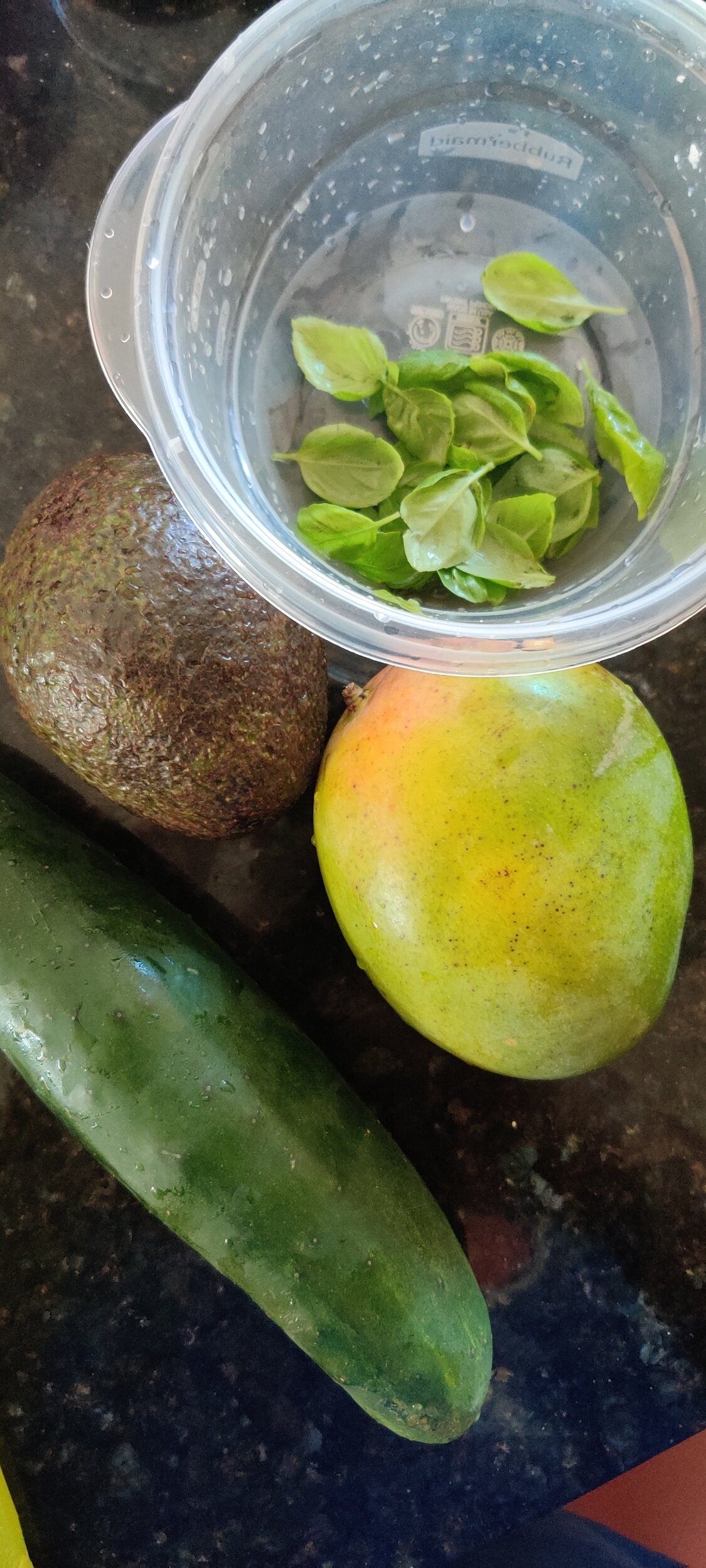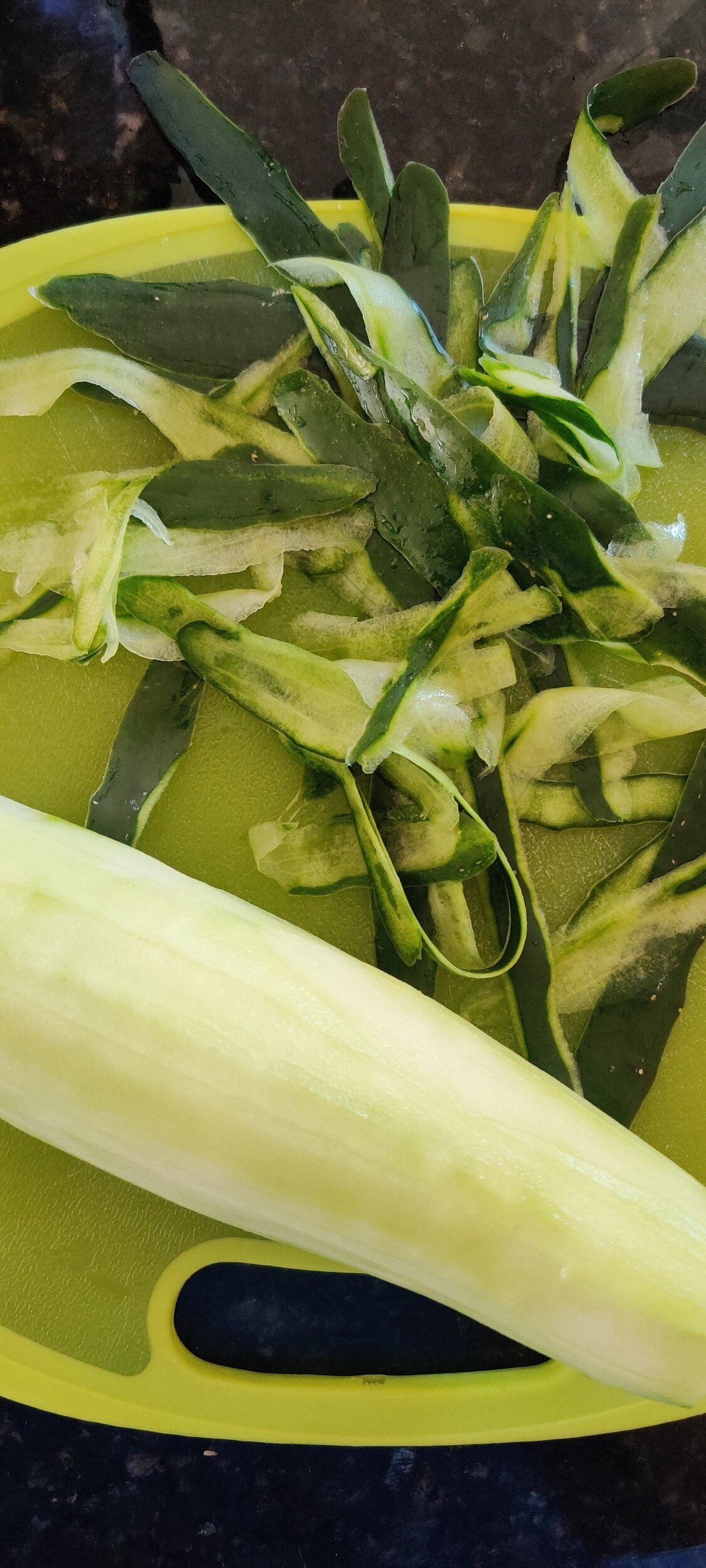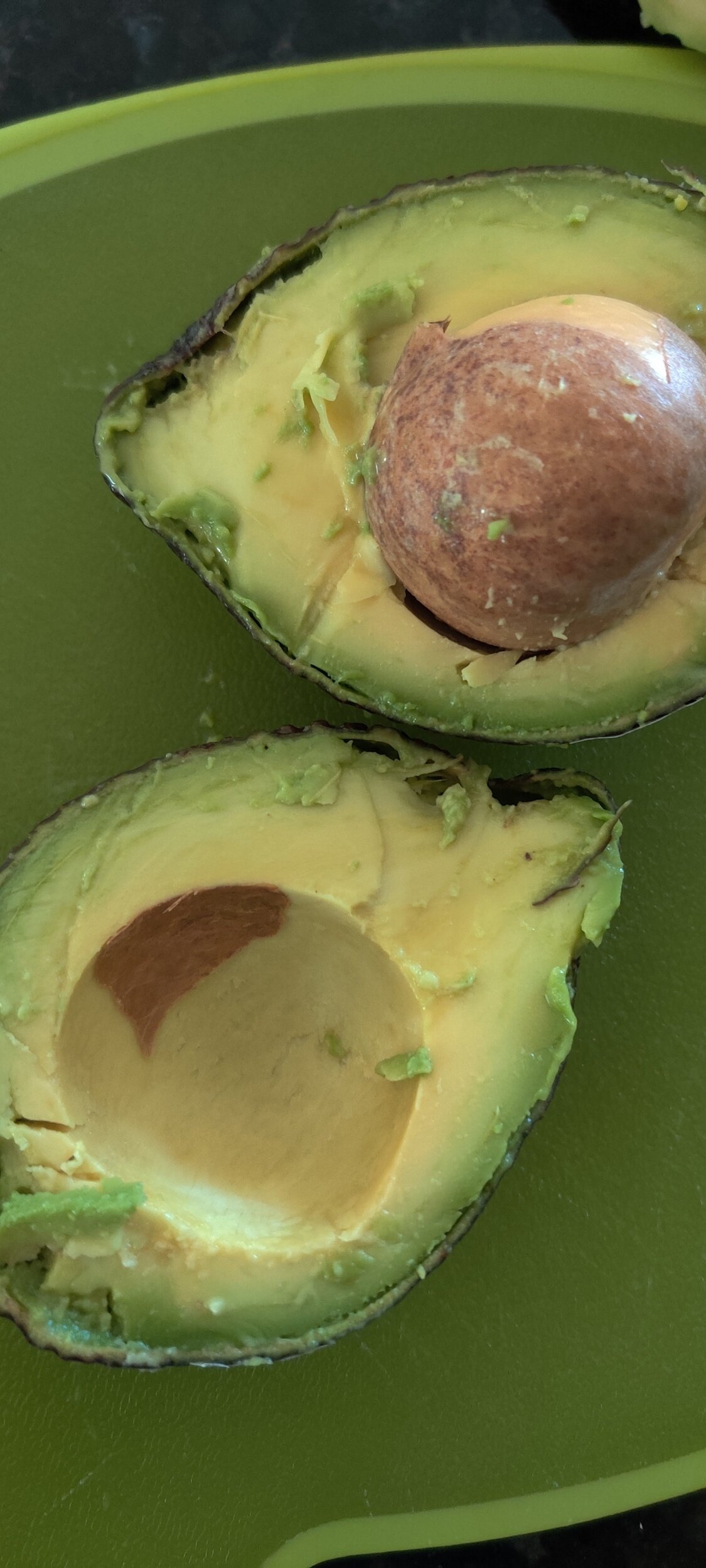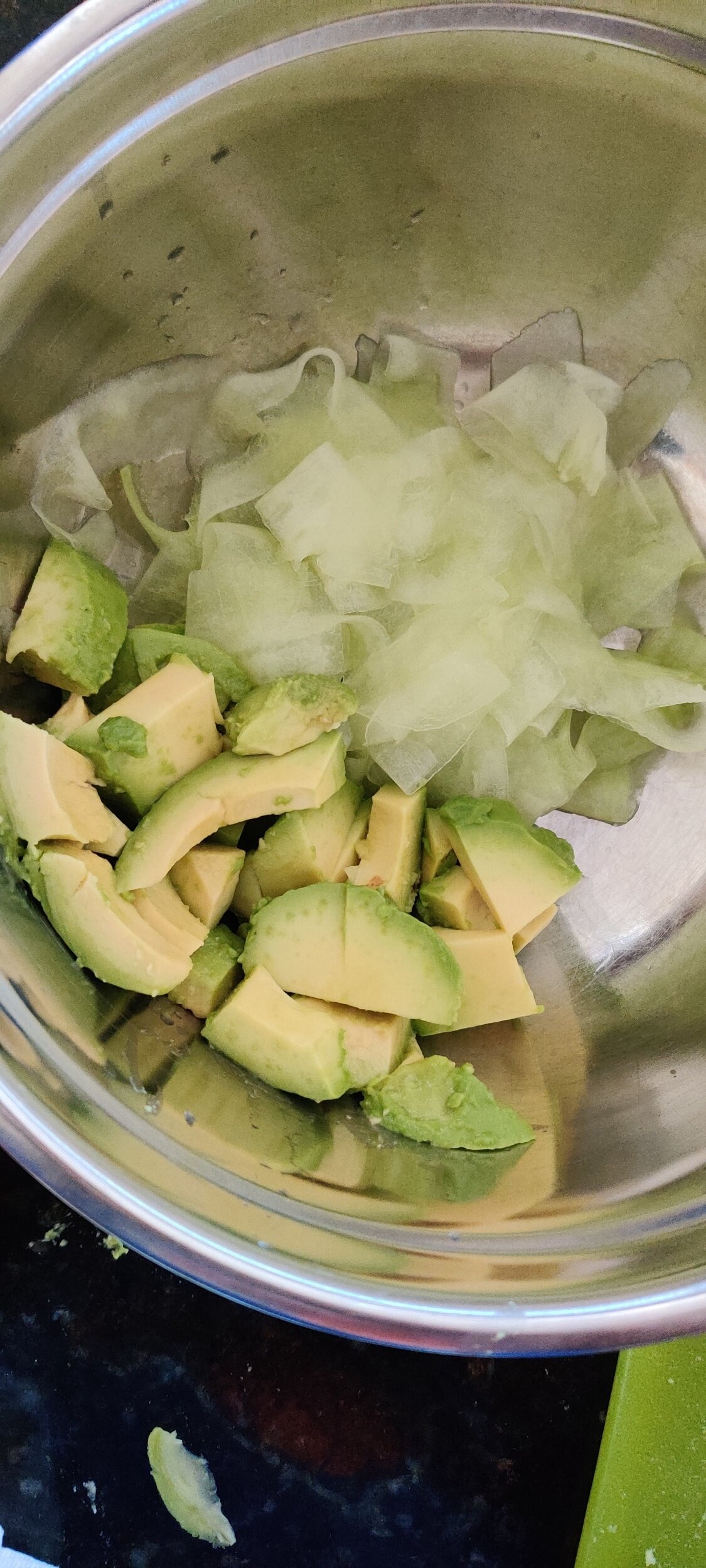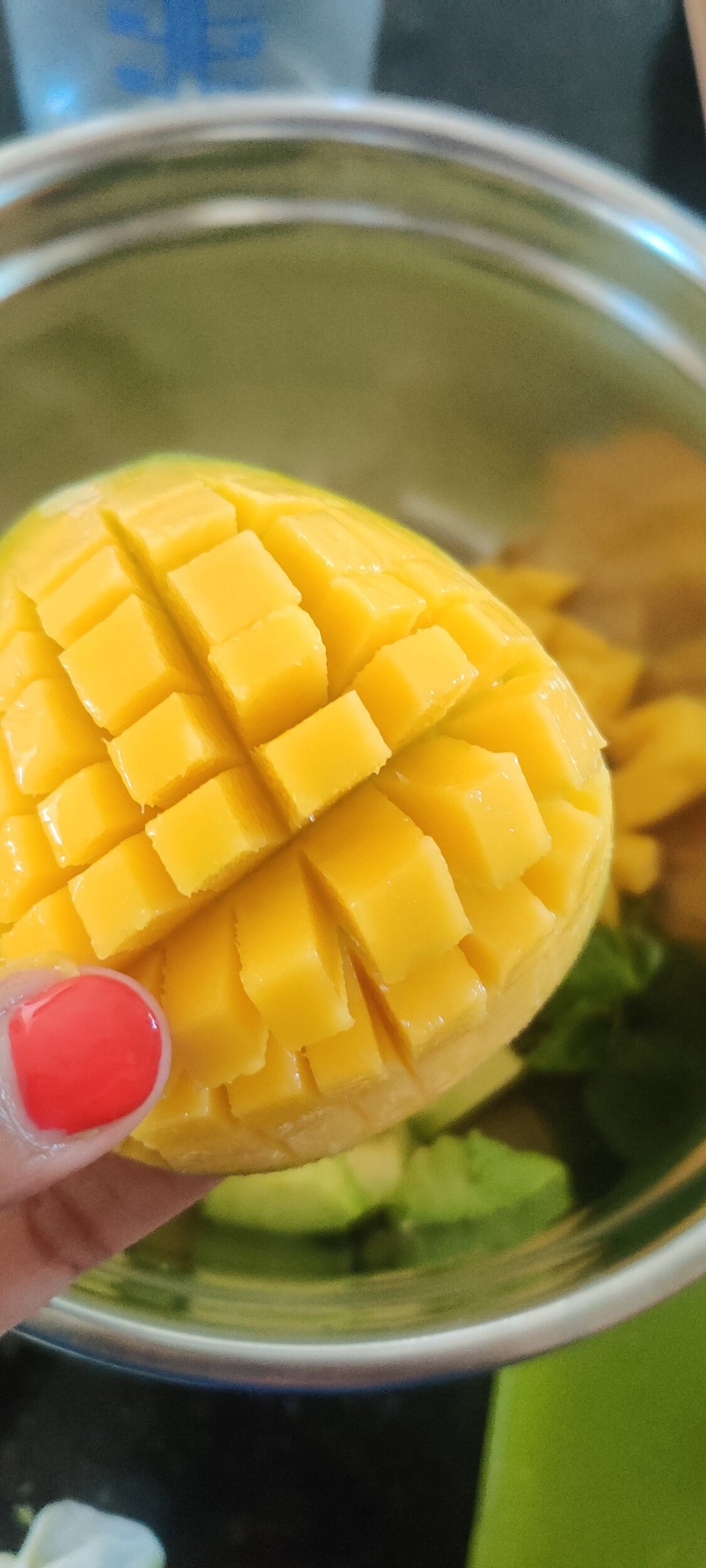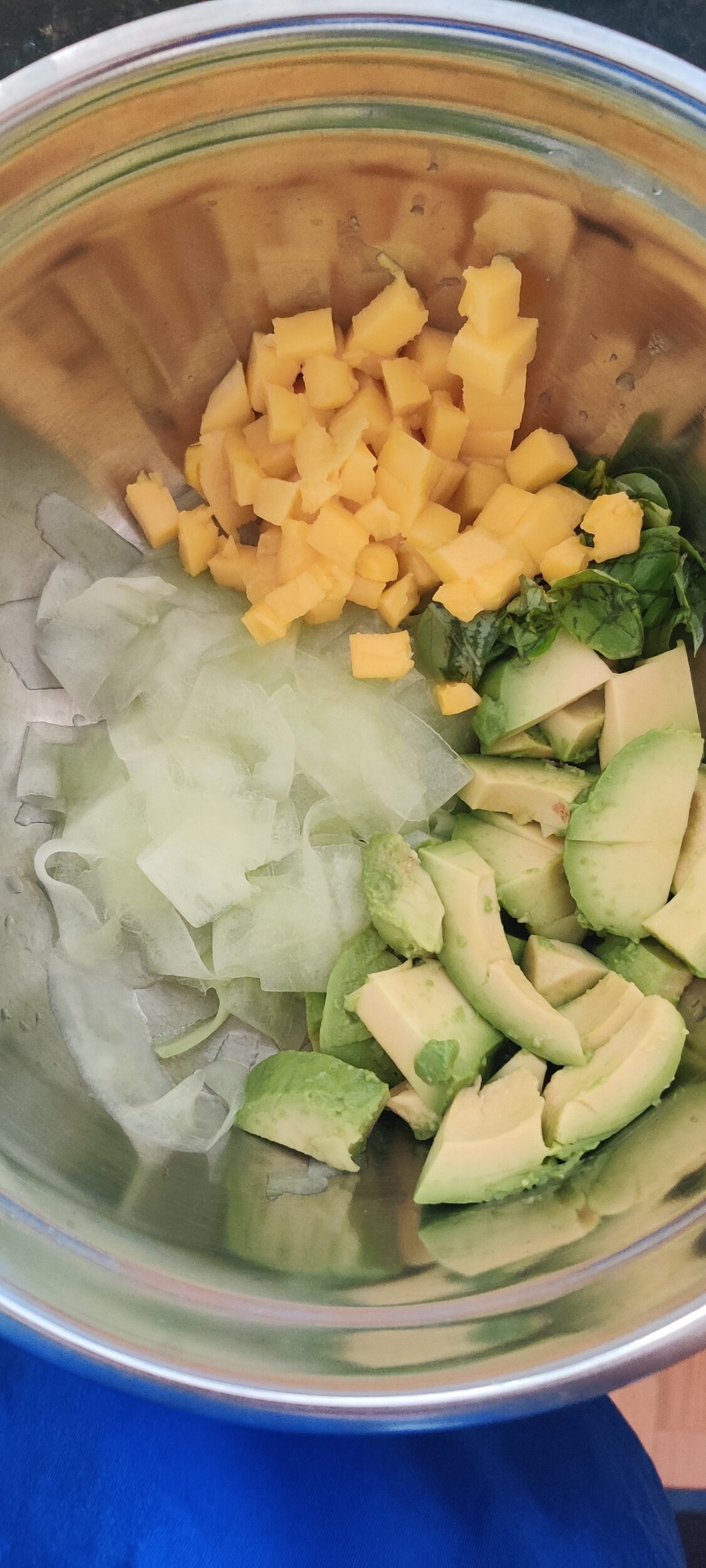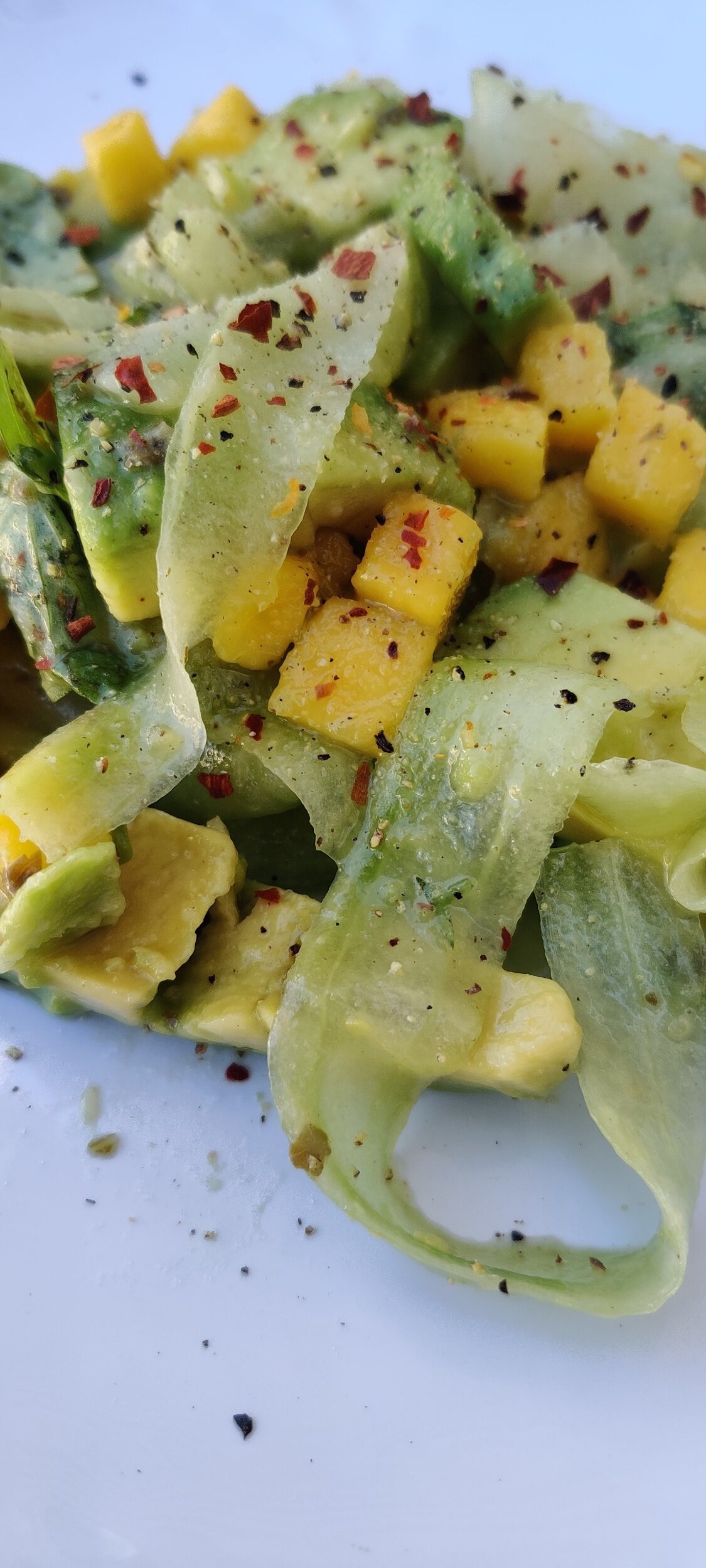Kale and Spinach Shakshouka
This recipe is part of a six course brunch.
I love a good shakshouka, but I've never tried it "green", probably because this is generally a low-carb dish anyway. But why not try it for spring? Also, how appropriate that once served on a plate this looks like an egg in a nest? This is the season for rebirth and new beginnings.
This meal's basic concept out of North Africa and the Middle East is a quick and affordable savoury deep dish with eggs poached into a rich, aromatic, thick tomato base often served with fresh bread. Some renditions in the West come with fresh herbs, and feta cheese sprinkled on top.
This recipe uses kale and spinach in place of the tomatoes, with some sautéed garlic and onions to add to the flavour. I also used some dried harissa spice, among other seasonings, to add a slight kick and unique flavour. Fittingly, harissa is a hot chilli pepper spice paste out of Tunisia - the same region shakshouka originates.
Enjoy this as a light addition savoury solution to your brunch that offers some protein and veggies!
Ingredients
3 handfuls kale, chopped
1 handful spinach
1/2 large yellow onion, thinly sliced lengthwise
1/2 teaspoon salt
1/2 teaspoon cumin
1/2 teaspoon paprika
2 tablespoons sherry
1 tablespoon Worchester sauce
1 tablespoon water
2 vegetable bouillons
2 tablespoons garlic, minced
1/2 teaspoon dried basil
1/2 teaspoon dried thyme
1 teaspoon harissa
2 tablespoons olive oil + extra
Parmesan cheese (I used vegan)
Feta cheese (optional)
Chilli flakes
Fresh parsley
Instructions
In a nonstick, oven-safe pan, heat the olive oil. Add the garlic and onion, sauté until fragrant and translucent, about 4-5 minutes.
Add the salt, pepper, bouillon cubes, and seasoning; cook for about 2 minutes to bloom the spices.
Add the kale and steam until it wilts, then mix to distribute the flavours. Follow this with the spinach and cook for about 3-4 minutes; the wilting will create more room in the pan.
Once both greens have cooked down, add the liquids to finish and simmer for about 5 minutes. You can season to taste at this time to make sure your vegetables have the flavour you want.
At this point, make room for each egg and directly crack the desired amount into the pan. Once the eggs begin to cook or turn white on the outside, bake at 350F for about 10 minutes. Remove the pan from the oven once the eggs are at your preferred doneness. I like mine harder and less runny in the center. You can usually tell from looking at the yolk. Alternatively, you can place a lid on top, keep the temperature low, and let the eggs cook on the stovetop.
Once done, sprinkle the shakshouka with parmesan cheese, feta, parsley, chilli flakes, and additional seasoning to taste. Drizzle with a little bit of olive oil and serve hot as is or with some bread; enjoy!
Mango, Avocado and Cucumber Salad
This recipe is the fifth of six plates I would serve if asked to make a 6-course meal or string of small plates/tapas based on Zimbabwean cuisine. I used ingredients that are commonly eaten or are considered a cornerstone of our cooking, but with a modern twist. The first was sweet potato soup, the second tomato bruschetta with guava balsamic glaze, the third fried sadza with chili creamed corn, and the fourth Portobello steak with acorn squash, kale and green beans.
Similar to the last dish, I concentrate on fruits/vegetables that are used widely in Zimbabwe but not necessarily together on a plate.
Let’s start with the very popular mangoes. The sweet, juicy fruit is readily available, cheap, refreshing, and nutritious. We have two mango trees in my family garden, but the trees were bushy enough to possible contain snakes, so I never attempted to climb them or forage it for fruit. My grandmother, however, had a long pipe with a wire hook on it to reach the tall trees which produced a much healthier, sweeter crop than ours. We always expected to leave her home with a basket full during the peak season. Mangoes can also be seen on the roadside sold by street vendors.
Next up is the avocado, another tree found in many places. I have pulled a few down myself, and they were organic and larger than most of the ones I come across in the grocery stores around the United States. I've mentioned before that ‘avocado toast’ was always a popular snack in Zim, different from the gourmet brunch dish I'm familiar with now. I grew up seeing people spread mashed avocado on their bread for breakfast seasoned with salt, sugar or chili flakes, nothing more!
Combining avocado and mango, on the other hand, not so common, but it should be! Avocado has that creamy texture from the healthy fats they contain, while mangoes are bright, sweet with a slight tartness. This inspired me to make a salad, almost reminiscent of salsa.
The cucumber adds to the freshness of the salad. In our family garden, we had spiky cucumbers or 'horned melons' as well, but used regular or English cucumbers for salads like much of the world does.
I hope you find this recipe as tasty as I do!
Ingredients
1/3 large mango
1 Hass avocado
1 medium cucumber
1 teaspoon salt
1 tablespoon black pepper
1/2 teaspoon chili flakes
1 tablespoon pesto
1 tablespoon basil leaves, chopped
3 tablespoons olive oil
1 tablespoon balsamic vinegar
1 teaspoon garlic powder
1 tablespoon lemon juice + extra for avocado
1 teaspoon dijon mustard
Instructions
Using a peeler, remove the cucumber skin and peel the uncut cucumber into thin strips. , discard the seeds to use for another recipe and add the strips to a large bowl.
Slice the avocado and remove the seed, dice and toss in lemon juice to slow down oxidation and add them to the bowl.
Slice off a 1/3 of the mango and dice into cubes, add to the bowl.
Add the chopped basil leaves, pesto, lemon juice, vinegar, olive oil, chili flakes, salt, pepper, garlic powder, and mustard. Mix until the entire salad is coated evenly. Serve immediately.
Groundnut, Corn, and Sweet Potato Platter
This platter is what I call the Zimbabwean snack ‘trifecta’, enjoyed in the morning or afternoon with milk tea. It's more common to eat each one separately, but all three are considered go-to energy boosters as they are affordable, easy to find, or grown in people’s gardens or community plots.
Groundnuts are plentiful during the rainy season, and provide a dose of protein - probably my favourite! We had them once in a while in my family, and I used to get thrilled picking them up from the street side vendors, a fond memory.
It's also not uncommon to serve one or all three for guests before a meal, as an appetizer.
You can serve them on a platter in very small portions, this is as wholefoods as it gets!
Ingredients
12-16 cups water
4 tablespoons salt
2-3 corn/maize cobbs
2-3 yams (not the orange-fleshed sweet potatoes)
4 cups groundnuts, shelled, unsalted, raw, and washed
Instructions
Split the water into two parts in large pots, placing the yams and corn together to boil with one tablespoon of salt.
In the second pot, add three tablespoons of salt and the groundnuts.
Boil both pots until the water has evaporated or the vegetables are softened and fully cooked. If you need to add water and time, do so.
Serve hot with milk tea, enough for 5-6.
Baked Bean and Corn Breakfast Tacos with Harissa
You can use fresh ingredients or whatever you have available to repurpose and prevent food waste. After a cookout, for example, many of us have leftover vegetables or other sides, why not use them to make tacos in the morning?
Baked beans and sweet corn go seamlessly together, and I add some taco seasoning to bring the flavours together.
We all know tacos need a sauce to enhance the taste and add just one more element to bring them to the finish line. Most people also like a spicy kick to their food, but instead of drenching your tacos in hot sauce or going to pico de gallo route, make some harissa!
Harissa is a North African sauce that serves as a staple in most Tunisian kitchens where it originated. The chili paste has gained global popularity, and I certainly can't wait to try it in its most authentic form when I visit the region. I whipped up my quick version you can use, but there are several recipes available if it's something you want to understand better.
You'll be glad these tacos woke you up regardless!
Ingredients
1/3 cup baked beans
Pinch of salt
1/8 cup water
1/2 teaspoon black pepper
1 teaspoon Primal Palate taco seasoning
1/4 cup sweet corn
Handful of arugula or spring greens
2-3 corn tortillas, charred on the stove top
3 cherry tomatoes, sliced in half
1 tablespoon butter
Quick harissa:
1/4 cup olive oil
1/4 teaspoon salt
1/4 cup chili powder
1/4 teaspoon cayenne pepper
2 tablespoons garlic, minced
1/2 teaspoon caraway seeds or dill
1 teaspoon mint (you may have a teabag if no dried spice)
1 teaspoon coriander
You can tweak the measurements to form the paste consistency you want.
Instructions
Heat the butter and toss the baked beans and corn in a saucepan with the salt, pepper, water and taco seasoning, cook for about 3 minutes.
Toast the flour tortillas directly over the gas stove to crispen then up. Brush lightly with the melted butter.
Prepare your harissa. Add the olive oil to a small saucepan and heat. Add the garlic and saute until golden, not burnt!
Take your pan off the heat and stir in your spices. (You can cook the spices for another minute if you like to bring our the flavours even more).
Assemble the tacos. You can do this as you like just lay the corn and baked beans, spring greens, and tomatoes on the tortillas. Top with your harissa as you see fit.
Berbere Spice
This is an easy homemade berbere spice blend you can use in a variety of recipes.
Berbere is central to Ethiopian dishes and adds a unique, depth of flavour. You can use the seasoning on roasted vegetables, in soups, stews, and even in desserts. I have an oatmeal recipe that uses the spice blend here.
As I have said before African cuisine doesn’t have to be complicated! You can also borrow some elements of it. This recipe a staple I recommend always keeping at home!
Ingredients
1/4 cup paprika
1/2 cup chili powder or ground New Mexico chilies
1/4 teaspoon garlic powder
1/2 teaspoon cardamom
1 teaspoon coriander
1/2 teaspoon nutmeg
1/2 teaspoon cinnamon
1 teaspoon onion powder
1/2 teaspoon ground cloves
1 teaspoon mustard powder or fenugreek powder
Instructions
Mix all the spices together and store in an air-tight glass container.
Berbere-Spiced Cherry Chocolate Oats
This sweet and spicy combo is brought to you by the wonderous breakfast vehicle the oatmeal bowl! I love them because they are versatile, rich in fiber, and you can have fun with the toppings as well as with infusions.
Africa is a vast continent with many cultures within it that take a lot of time and care to make their dishes, partly because cooking is a social event. However, that doesn't mean all the dishes are difficult and time-consuming. You can also borrow elements and apply them to all kinds of food.
On that note, I add berbere to the oatmeal, a seasoning I've made before. It's a spice blend that is a mainstay in Ethiopian cuisine. It's a complex, rich, seasoning that is typically used in savory dishes to add depth of flavour but can be applied to desserts as well. I decided to add it to an already known pair that works - cherry and chocolate!
The cocoa powder and spicy berbere blend together seamlessly, and with the added cherries and brown sugar. Try it out!
Ingredients
1/3 cup cherries, pitted and chopped
2 tablespoons cocoa powder
1 tablespoon brown sugar
1 1/2 teaspoons berbere spice (adjust according to preference)
1/2 teaspoon salt
1/2 cup oats
1 1/2 cups plant-based milk
1/2 cup water
Instructions
Add the dry oats and milk to a pot and bring to a boil.
Reduce heat, and mix in the sugar, salt, and chopped cherries.
As the oatmeal cooks, prepare the berbere spice blend.
Add the berbere to the pot with additional water. Simmer for until the oats are fully cooked, season to taste. Total cook time is around 10 minutes.
Serve with cherries, whipped cream, and syrup! Enough for two.










